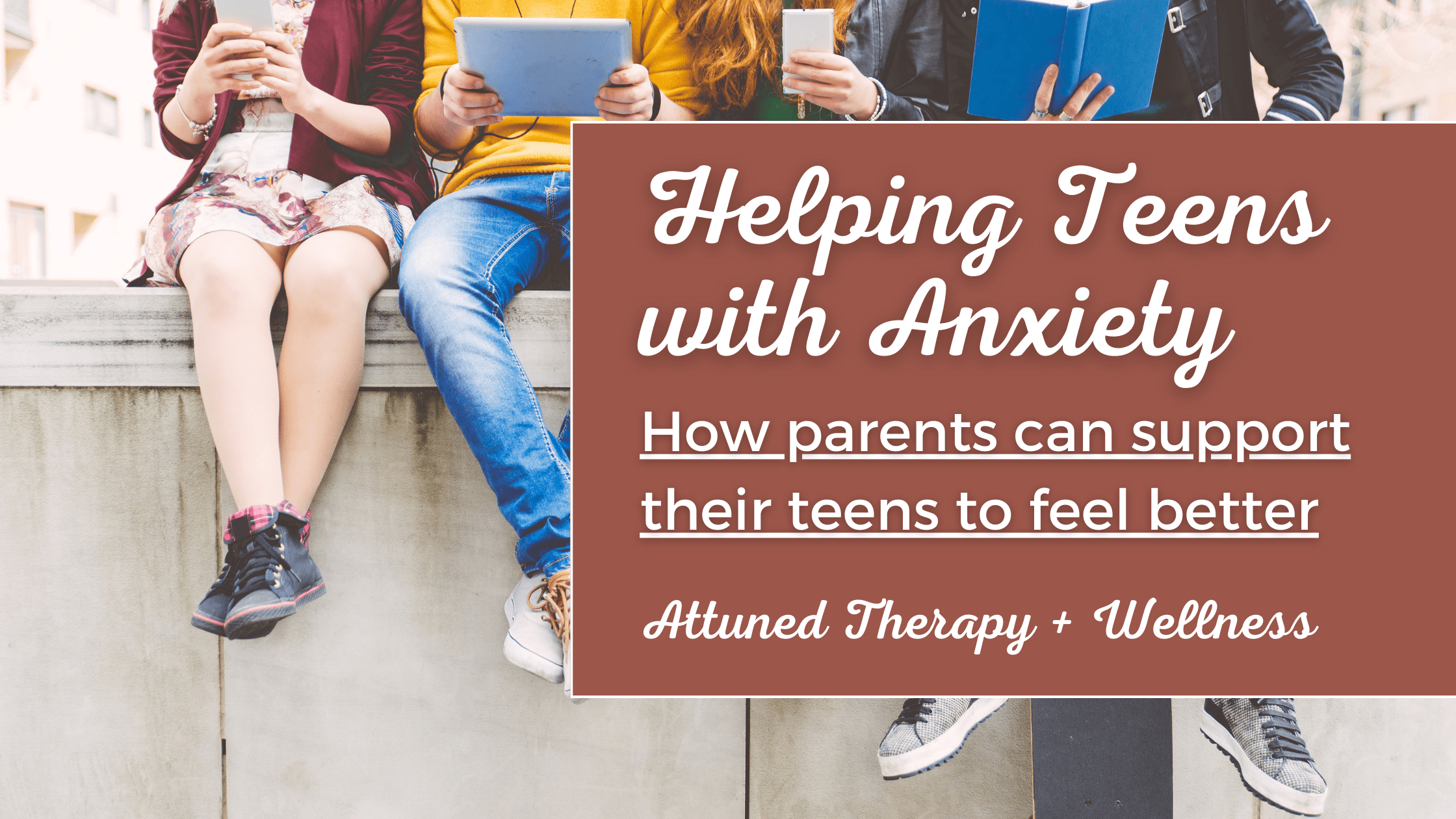Anxiety in teenagers is more common than ever, with studies showing that up to 1 in 3 adolescents struggle with an anxiety disorder by the age of 18 (Merikangas et al., 2010). Between academic pressure, social challenges, and the stress of growing up in a fast-paced world, many teens feel overwhelmed, uncertain, and disconnected.
One powerful approach to reducing teen anxiety is attachment-based therapy. Research shows that strengthening a teen’s sense of security in relationships—especially with caregivers—can help them develop a stronger sense of identity, improve emotional regulation, and feel more confident navigating life’s challenges (Allen & Tan, 2016).
In this blog, we’ll explore how attachment-based therapy helps teens with anxiety, what the research says, and how virtual therapy for teens in Ontario, including Kincardine, can provide the support your child needs. If you are trying to help your teen with anxiety, our team of mental health therapists can provide your family with additional strategies and resources, along with attachment-based therapy for your teen.
Why Are So Many Teens Struggling With Anxiety?
Teen anxiety can be triggered by a range of factors, including:
✔ Academic pressure – Fear of failure, high expectations, and performance anxiety.
✔ Social challenges – Peer pressure, bullying, and navigating friendships.
✔ Family stress – Divorce, conflict, or emotionally distant relationships.
✔ Identity struggles – Figuring out who they are and where they belong.
✔ Trauma and past experiences – Early attachment wounds or unresolved emotional pain.
When anxiety takes hold, teens may experience:
- Overthinking and excessive worry.
- Physical symptoms (stomachaches, headaches, muscle tension).
- Avoidance behaviors (refusing to go to school, avoiding social situations).
- Irritability or mood swings due to emotional overload.
Many parents feel helpless watching their teen struggle. However, research shows that fostering a secure attachment can be one of the most powerful ways to help them feel safer, more confident, and less anxious. When teens are feeling anxious, parenting them can feel almost impossible. Therapy offers a safe outlet for teens to release their emotions and feel seen and heard. In addition, therapists can support parents to repair and nurture their relationship with their teenage children.
How Attachment-Based Therapy Helps Teens With Anxiety
Attachment-based therapy is rooted in attachment theory, which emphasizes the importance of strong, trusting relationships in shaping emotional well-being. Studies show that teens who feel securely attached to their caregivers experience:
✅ Lower levels of anxiety and depression (Brumariu & Kerns, 2010).
✅ Better emotional regulation (Pascuzzo et al., 2011).
✅ Increased self-confidence and resilience (Scott et al., 2022).
✅ Stronger problem-solving and stress-coping skills (Zimmer-Gembeck et al., 2021).
When teens don’t feel securely attached, they may:
- Struggle to trust others or ask for help.
- Experience higher stress levels in social and academic settings.
- Feel emotionally disconnected or unsure of their own identity.
By strengthening their attachment relationships, therapy helps teens build a secure base—a foundation that allows them to explore life with confidence instead of fear.
Key Ways Attachment-Based Therapy Helps Teens Feel More Secure
1. Strengthening the Parent-Teen Bond
One of the strongest predictors of teen mental health is the quality of their relationship with parents or caregivers (Moretti & Peled, 2004). Attachment-based therapy helps rebuild trust, improve communication, and create a sense of emotional safety within the family.
🔹 Example: Instead of feeling criticized, a teen learns to express their emotions openly and trust that they’ll be heard and supported.
2. Helping Teens Develop a Stronger Sense of Identity
During adolescence, teens are forming their self-identity—but anxiety can make them feel lost, uncertain, or unworthy. Studies show that secure attachment helps teens develop a clearer sense of self, making them less vulnerable to external pressures.
🔹 Example: A teen who previously felt insecure about friendships starts making healthier social choices because they trust their own worth.
3. Teaching Emotional Regulation and Coping Skills
Secure attachment allows teens to co-regulate with caregivers and therapists—meaning they learn how to calm their nervous system in stressful situations (Siegel, 2012). Therapy teaches teens practical anxiety-management strategies while reinforcing emotional safety.
🔹 Example: Instead of shutting down or having panic attacks, a teen learns breathing techniques, mindfulness, and healthy self-talk to navigate anxiety.
Virtual Therapy for Teens With Anxiety in Ontario
If your teen is struggling with anxiety, virtual therapy can be a highly effective and accessible option. Online therapy allows teens to:
✔ Get support from the comfort of home—no need to travel.
✔ Connect with a therapist who specializes in teen anxiety anywhere in Ontario.
✔ Feel more at ease in a familiar setting, which can make opening up easier.
At [Your Therapy Practice Name], we offer virtual therapy for teens across Ontario, including Kincardine, to help them manage anxiety, build confidence, and develop a secure sense of self.
Helping Your Teen Take the First Step Toward Healing
As a parent, one of the most powerful things you can do is create a secure foundation where your teen feels safe, seen, and supported. If your teen is struggling with anxiety, attachment-based therapy can help them:
✔ Feel more secure in their relationships
✔ Develop a stronger sense of identity
✔ Learn effective coping strategies for stress
✔ Gain confidence to navigate life’s challenges
Book Your First Therapy Session Today
At Attuned Therapy + Wellness, we are passionate about helping teens with anxiety through evidence-based, attachment-focused therapy. Whether in Kincardine or anywhere in Ontario, we offer virtual therapy designed to support your teen’s unique needs.
💛 Contact us today to book a consultation and take the first step toward healing.


0 Comments